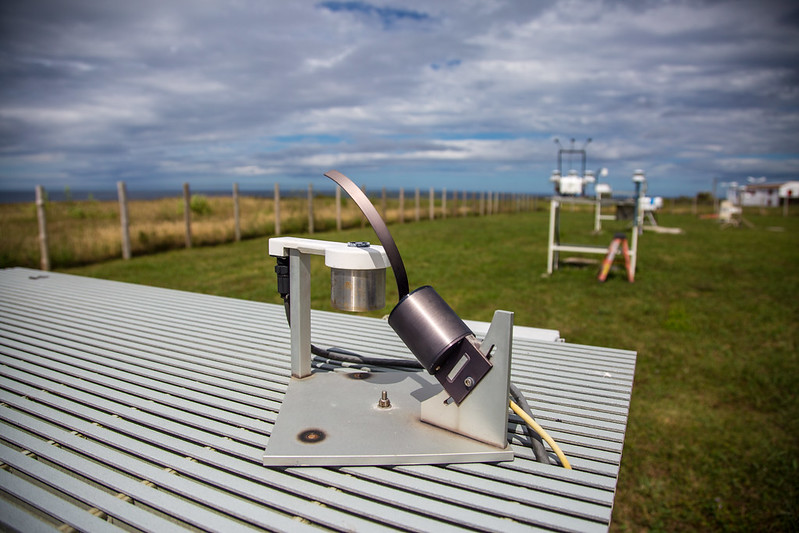
BAMS reports properties at the top of the marine boundary layer over the eastern North Atlantic Ocean
A recent paper in the Bulletin of the American Meteorological Society (BAMS) illustrates the value of airborne data when combined with complementary ground-instrument data―in this case from the U.S. Department of Energy’s (DOE) Atmospheric Radiation Measurement (ARM) user facility.
The BAMS study reported on properties at the top of the marine boundary layer over the eastern North Atlantic Ocean.
Published in January 2021, the paper summarized the July 2017 Azores Stratocumulus Measurements of Radiation, Turbulence and Aerosols (ACORES) field campaign. The ACORES campaign pulled in helicopter-borne data using instruments suspended from a tether dangling into marine clouds.
Context for ACORES airborne data came from ground instrumentation at ARM’s Eastern North Atlantic (ENA) atmospheric observatory on Graciosa Island and one other surface site.
Researchers set out to investigate, at a range of scales, the properties of the marine boundary layer in this remote stretch of the Atlantic. Clouds there are typically nearly pristine, though episodes of polluted air masses can stream in from western Europe, North Africa, and even North America.
The authors looked at the vertical distribution of aerosol particles, turbulence parameters, and the radiative and microphysical properties of the region’s abundant stratocumulus clouds.
Co-authors of the paper from Michigan Technological University acknowledged support from DOE’s Atmospheric System Research (ASR) program. They are part of a 2019–2022 ASR project on entrainment and aerosol effects on marine boundary-layer clouds.
Read the full story on the ARM website.
# # #This work was supported by the U.S. Department of Energy’s Office of Science, through the Biological and Environmental Research program as part of the Atmospheric System Research program.

